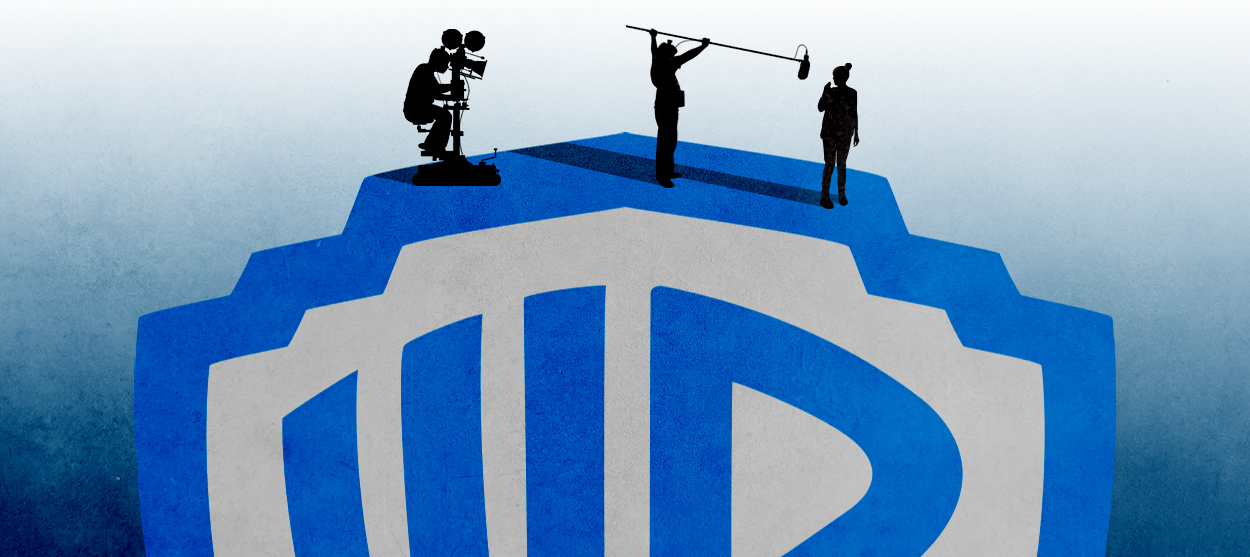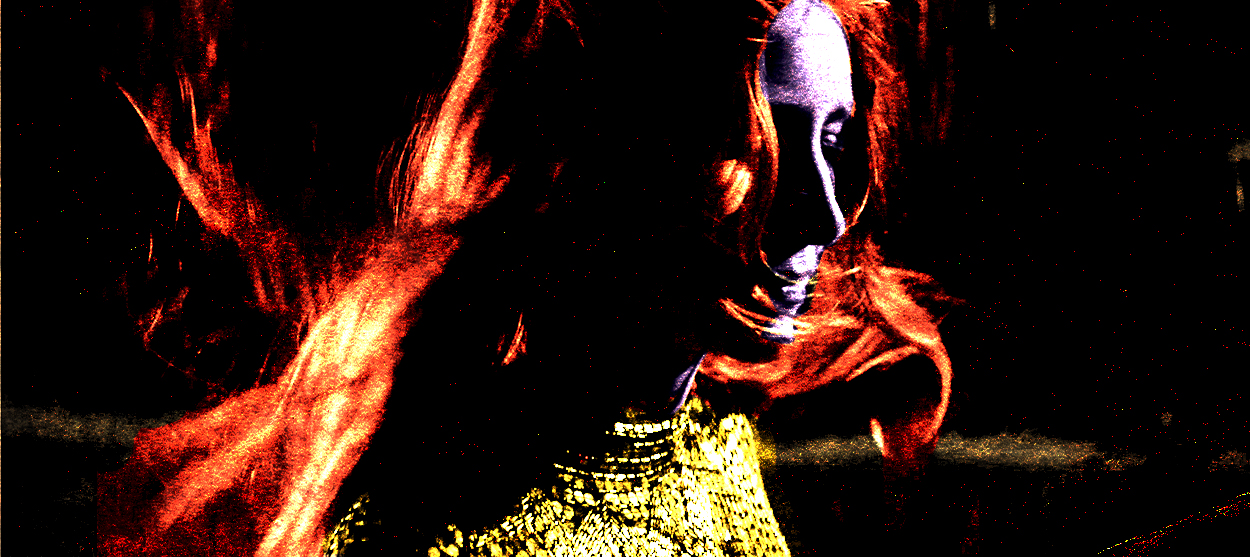Why Rick and Morty is the perfect show for our nihilistic age
There is wisdom in this madcap cartoon

"Nobody exists on purpose, nobody belongs anywhere, everybody's gonna die," 14-year-old Morty tells his sister on Cartoon Network's Rick and Morty. "Come watch TV."
There's something about a cartoon world that gives nihilism just the right conditions to flourish. Cartoon characters spend eternity wearing the same clothes, reciting the same catchphrases, and undertaking the same death- and physics-defying adventures. Their lives are pointless, but they don't seem to know it. In this sense, Rick and Morty, whose two seasons on the air have earned it a dedicated cult following, is both a recognizable descendant of its animated forbears, and a horse of an entirely different color. Rick and Morty's lives are pointless, and they do know it. Simply put, it's a show that doesn't succeed at mimicking real life in cartoon form as much as it does in showing us the cartoonishness of real life.
Rick and Morty, which depicts the adventures of Morty, a normal 14-year-old boy, and Rick, his mad scientist grandfather, might be most easily described as a foul-mouthed homage to Back to the Future, but it's even more reminiscent of comedian John Mulaney's routine about it. "It's a very weird movie," Mulaney says. "Marty McFly is a high school student whose best friend is a disgraced nuclear physicist. And, I shit you not, they never explain how they became friends. They never explain it. Not even in a lazy way."
The Week
Escape your echo chamber. Get the facts behind the news, plus analysis from multiple perspectives.

Sign up for The Week's Free Newsletters
From our morning news briefing to a weekly Good News Newsletter, get the best of The Week delivered directly to your inbox.
From our morning news briefing to a weekly Good News Newsletter, get the best of The Week delivered directly to your inbox.
But Back to the Future is all about maintaining the order that time travel disrupts: Marty has to keep his family intact or risk losing his own existence. Back to the Future plays with the possibilities of two competing timelines. Rick and Morty, whose mad scientist has a portal gun capable of taking him on adventures across infinite dimensions, revels in its premise's potential for endless chaos.
Rick is as complex and world-weary as Back to the Future's Doc Brown might have been, in an alternate dimension where the screenplay landed on Oliver Stone's desk instead of Steven Spielberg's. If there's a common thread in Rick and Morty's adventures — which include Morty accidentally impregnating an alien robot and Rick installing an interdimensional cable box on the family TV — it's that Morty wants to do the right thing, while Rick embraces fleeting pleasure and perpetual chaos. "You're a monster!" Morty tells Rick in the show's pilot episode, after one of Rick's terrifying adventures goes awry, putting his grandson's life at risk. "You're like Hitler," Morty says, "but even Hitler cared about Germany. Or something." To Morty, and likely to many viewers, the fact that Rick doesn't care about anything — crave any results, seek any treasure, quest after any knowledge — makes him far more frightening than any villainous scheme ever could.
But Rick also doesn't seem to have much of a choice. As the show's worldview expands, we watch Rick and Morty meet infinite other Ricks and Mortys, and, in one fearlessly brutal episode, as Rick and Morty accidentally destroy their world (because of love and mutated praying mantises — long story) — we see them take the places of a recently deceased Rick and Morty in another dimension. The question the show asks, implicitly, is whether we are watching the same Rick and Morty from episode to episode — and why that question matters to us as viewers.
It would be stating the painfully obvious to say that we live in an age of anxiety. The world may not be any bloodier now than it was a hundred years ago, but now we can see that bloodshed in HD, on a thousand different channels, as we scroll through our Facebook and Twitter feeds, as we look up momentarily at the screens in bars and restaurants and even on gas pumps. We can't travel from dimension to dimension (well, I shouldn't speak for everyone, but I can't), but each day allows us to see a thousand different worlds' worth of violence and splendor. It's hard to find our place in the scheme of things. It's hard for Americans to get past the notion not that our nation has lost its way, but that we have grown less and less able to ignore its fundamental flaws. It's hard — though perhaps not hard enough — to escape the reality that our planet will only sustain our existence for so much longer, and that our species' extinction, when it comes, will be our own doing. What is left for us in a world where all our achievements will be lost, where our empires will crumble to dust, and where our prayers for survival seem doomed to go unheard?
A free daily email with the biggest news stories of the day – and the best features from TheWeek.com
Well, we still have cartoons. And cartoon characters seem to know something that we have long struggled with: not just that Wile E. Coyote will never catch the Road Runner, but that this was never the point. We're in an endless desert where the road never takes us to a real destination and our best-laid plans lead only to our own destruction. In the world of cartoons, there is nothing to do but embrace nihilism: to realize that the point of existence is to stop searching for a point, and accept the chaos of the moment.
Rick and Morty speaks to its viewers by making this acceptance easier: Its animation is hyper-violent at times, and ornately beautiful at others — and sometimes both. Its characters are deprived of dignified deaths or meaningful character arcs, but man, do they have fun. Their lives aren't about futurity, but about accepting the fragile joys each moment can bring — and though they live in a cartoon world, it is also recognizably our own.
Sarah Marshall's writings on gender, crime, and scandal have appeared in The Believer, The New Republic, Fusion, and The Best American Nonrequired Reading 2015, among other publications. She tweets @remember_Sarah.
-
 Striking homes with indoor pools
Striking homes with indoor poolsFeature Featuring a Queen Anne mansion near Chicago and mid-century modern masterpiece in Washington
-
 Why are federal and local authorities feuding over investigating ICE?
Why are federal and local authorities feuding over investigating ICE?TODAY’S BIG QUESTION Minneapolis has become ground zero for a growing battle over jurisdictional authority
-
 ‘Even those in the United States legally are targets’
‘Even those in the United States legally are targets’Instant Opinion Opinion, comment and editorials of the day
-
 Walter Isaacson's 'Elon Musk' can 'scarcely contain its subject'
Walter Isaacson's 'Elon Musk' can 'scarcely contain its subject'The latest biography on the elusive tech mogul is causing a stir among critics
-
 Welcome to the new TheWeek.com!
Welcome to the new TheWeek.com!The Explainer Please allow us to reintroduce ourselves
-
 The Oscars finale was a heartless disaster
The Oscars finale was a heartless disasterThe Explainer A calculated attempt at emotional manipulation goes very wrong
-
 Most awkward awards show ever?
Most awkward awards show ever?The Explainer The best, worst, and most shocking moments from a chaotic Golden Globes
-
 The possible silver lining to the Warner Bros. deal
The possible silver lining to the Warner Bros. dealThe Explainer Could what's terrible for theaters be good for creators?
-
 Jeffrey Wright is the new 'narrator voice'
Jeffrey Wright is the new 'narrator voice'The Explainer Move over, Sam Elliott and Morgan Freeman
-
 This week's literary events are the biggest award shows of 2020
This week's literary events are the biggest award shows of 2020feature So long, Oscar. Hello, Booker.
-
 What She Dies Tomorrow can teach us about our unshakable obsession with mortality
What She Dies Tomorrow can teach us about our unshakable obsession with mortalityThe Explainer This film isn't about the pandemic. But it can help viewers confront their fears about death.